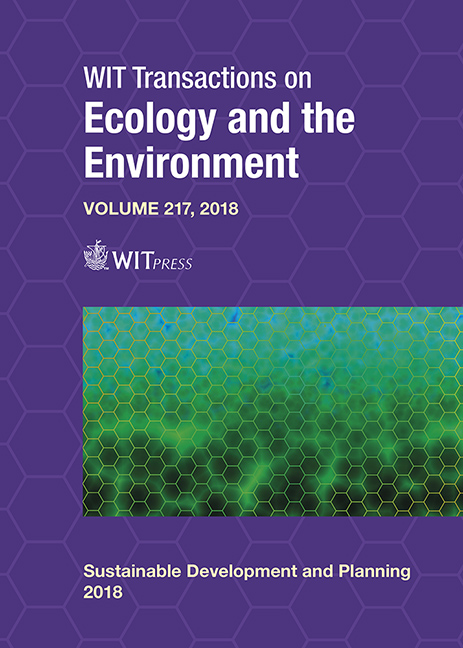DEGRADATION OF VETERINARY ANTIBIOTICS FROM SLAUGHTERHOUSE WASTEWATER USING TITANIUM DIOXIDE AS A CATALYST
Price
Free (open access)
Transaction
Volume
217
Pages
10
Page Range
135 - 144
Published
2018
Size
346 kb
Paper DOI
10.2495/SDP180131
Copyright
WIT Press
Author(s)
MARTHA N. CHOLLOM, SUDESH RATHILAL, FEROZ M. SWALAHA, BABATUNDE F. BAKARE
Abstract
Antibiotics (ABs) and other pharmaceuticals are designed to be effectively bioactive against certain human and animal pathogens. It has been confirmed that some of these compounds are metabolized in animals by up to 90% or more, while others are metabolized by 10% or less. The residues find their way into the environment. Titanium dioxide (TiO2) has been extensively applied as a catalyst under UV/solar irradiation to degrade antibiotics due to the advantages it offers. The study presented here evaluated the use of TiO2 as a catalyst for the degradation of three antibiotics; namely; ciprofloxacin, enrofloxacin and sulfamethazine. Response surface methodology was used for the optimisation and modelling of independent variables, namely TiO2 dosage, antibiotics concentration and pH, based on the Box-Behnken (BB) experimental design. Photodegradation of three veterinary antibiotics was shown to be effective using TiO2 as a catalyst. The degradation of antibiotics depended on the chosen variables. The results from the experiment were fitted into the polynomial equation which was used to further elaborate optimisation. The value of determination of coefficient R2 were above 0.9 for R1 and R2 and above 0.6 for R3, thus verifying the model fitting. Finally, the optimum conditions for the degradation of the selected antibiotics were obtained which were R1; pH (3–5), antibiotics concentration (10–25 mg/L). R2; pH (3–4) and antibiotics concentration (30–50 mg/L) and finally R3; pH (10) and antibiotics concentration of 15 mg/L.
Keywords
antibiotics, optimization, photocatalysis, antibiotic resistant strains, response surface methodology





